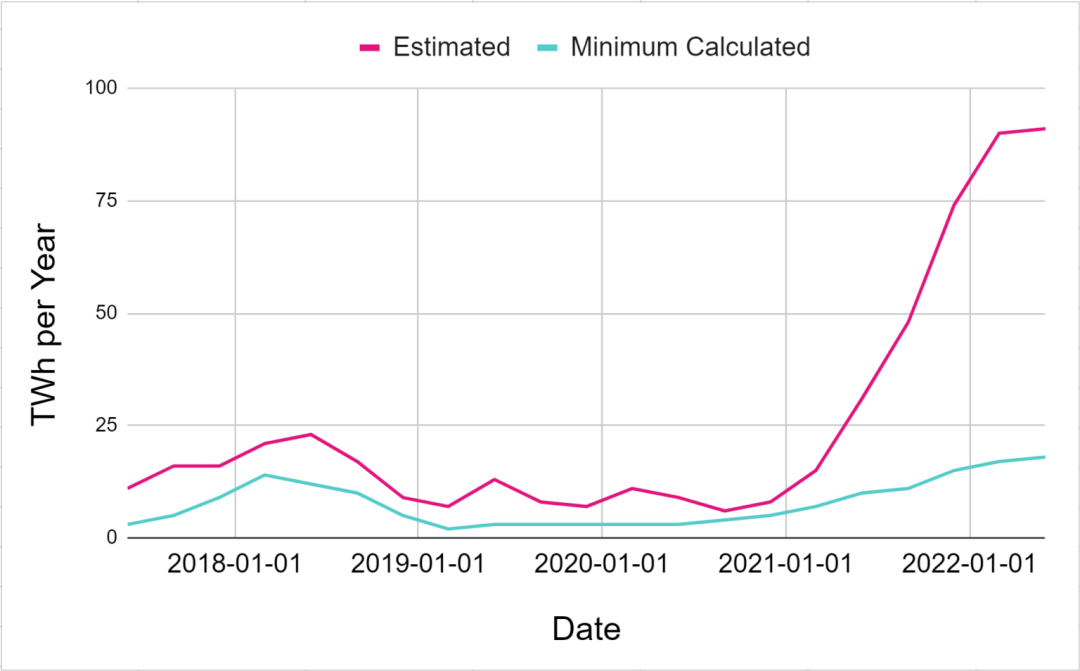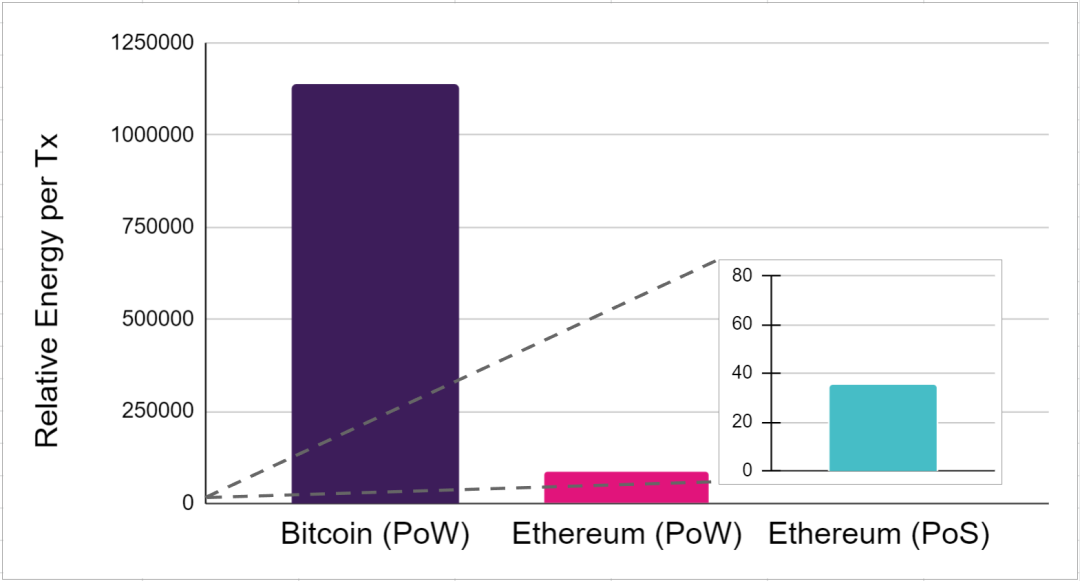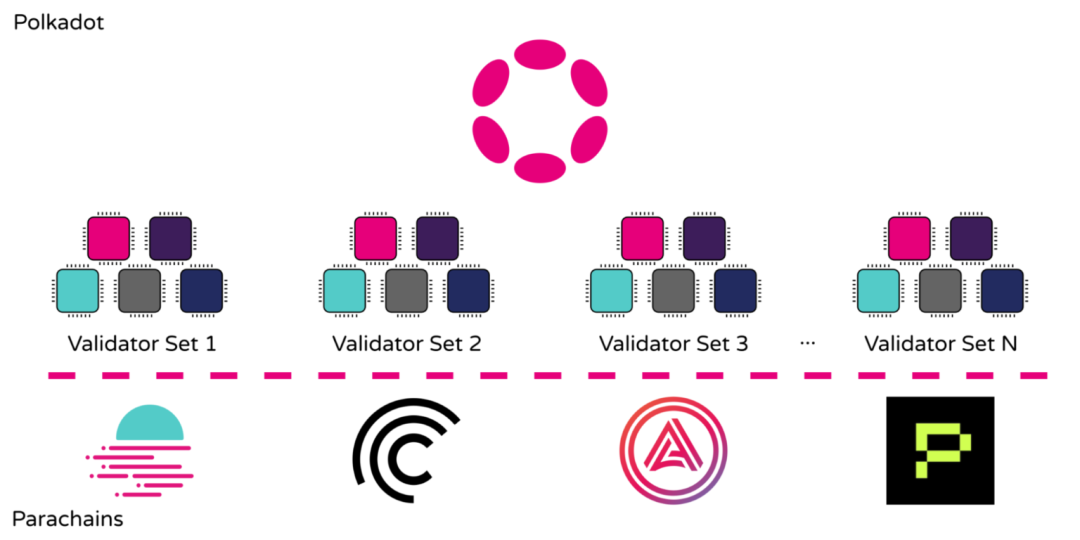TL;DR
secondary title
Not all blockchains cause huge energy consumption, and people often think that the consensus mechanism is a pure waste of resources;
The mainstream consensus mechanisms are Pow and PoS, both of which have completely different implementation paths. Compared with PoW, the energy consumption of PoS can usually save about 99%, which also makes PoS a more environmentally friendly choice;
The PoW mechanism guarantees network security through computing power (mining), but consumes a lot of electricity;
The PoS mechanism maintains network stability through pledge and penalty mechanisms;
Ethereum's shift to PoS consensus will reduce energy consumption by more than 99%;
Polkadot's PoS shared security model is a more efficient alternative to the PoW consensus mechanism;
A rough calculation shows that the combined energy consumption of Moonbeam and Polkadot will only use 0.001% of the PoW consensus mechanism of Ethereum
As most enthusiasts know, a blockchain is a database maintained and shared among multiple computers forming a single network. For a blockchain to function properly, everyone interacting with it must see the same data, meaning every computer on the network must agree on each block on the chain and its overall state. To ensure that a consensus agreement can be reached, a blockchain needs a consensus mechanism.
There is considerable debate surrounding these consensus mechanisms, mostly focusing on the energy consumption or efficiency each brings. This energy consumption is compared to physical databases and other existing technologies, but is often not included in the comparison at all, and instead is directly seen as waste, with negative impacts on global sustainability.
first level title
1
first level title
Blockchain basics and energy misconceptions
There is a common misconception about blockchains that all blockchains are huge drains of energy resources with significant impact on climate change. In fact, consumption depends on the consensus mechanism. Not all blockchains are the same, and most of them are quite efficient. Also, these comparisons often forget to take into account the systems that have been replaced by decentralized databases, and the offsetting energy consumed.The two most common consensus mechanisms today are Proof-of-Work (hereinafter referred to as PoW) and Proof-of-Stake (hereinafter referred to as PoS). usually,Compared with PoW, PoS can save about 99% of energy consumption, which also makes PoS a more environmentally friendly choice.
In conclusion:
Proof of Work and Proof of Stake
Proof of Work (PoW) and Proof of Stake (PoS) are the two main types of consensus mechanisms
secondary title
proof of work
proof of work
The Proof of Work (PoW) mechanism has been tested over many years and has proven effective in providing security and decentralization. Proof-of-work has an excellent track record of being considered the most secure way to build and maintain chains, as evidenced by the state of the Bitcoin and Ethereum blockchains.
In general, proof-of-work works to make the network more secure by making it harder to predict who will create the next block. That is to say, it will be very difficult for malicious individuals or organizations to insert fraudulent blocks. In Proof of Work, most of the energy is spent choosing who is the author of the next block.
Mining secures the PoW network
This process is mining. The way this works is that the miner always has to "work" at a higher rate than the attacker to provide security to the chain. In practice, to outperform malicious actors, a miner should not only have efficient hardware, since attackers can also use it, but also more computing power, which often results in higher energy consumption. Ultimately, the miner's computer must prove that it spent more computing power than the attacker to solve the puzzle, thereby ensuring the security of the network by suppressing malicious behavior in the network.
secondary title
proof of stake
Unlike PoW, Proof of Stake (PoS) generally does not require individuals to compete in the accumulation of computing power to join the network. Instead, network participants need to pledge assets as collateral to be able to verify blocks in the chain.
PoW focuses on making the system difficult to participate in, while PoS focuses on making the system economically unfavorable to participate. The bigger and more valuable the PoS, the higher the cost of the attack.
Staking secures the PoS network
first level title
2
first level title
Demonstrate the efficiency of Moonbeam through the design of Polkadot proof of rights and interests
Polkadot's PoS system uses a shared security model, which provides a more efficient consensus mechanism than the general PoS system. A recent research report from Messari confirmed that Polkadot’s energy consumption is much smaller than other PoW and PoS competitors.
first level title
3
first level title
Compare the impact on the environment
Both PoW and PoS have their own advantages and disadvantages, and the impact of the former on the environment often outweighs the debate over whether to support the latter. This has become a bigger problem as the number of web users has grown in recent years.
Fortunately, when the environmental impact of mining has become the main point of criticism for the blockchain in academia and the media, more and more new and old teams have begun to rely on PoS. One such group is the Ethereum Foundation, which is now in the final stages of its transition to PoS and is thus coming to an end of the most significant debate against its blockchain. The team’s transition comes at a critical time, as the energy consumption of Ethereum’s PoW consensus has increased dramatically over the past two years, as shown in the graph below.

first level title
4
first level title
Environmental Impact of PoW: Ethereum
Ethereum is in the process of transitioning from PoW to PoS consensus mechanism
Estimates show that the annual consumption of PoW is about 84.4 TWh, and one Ethereum transaction is equivalent to about 20,000 hours of video on YouTube
The shift to PoS consensus will reduce their energy consumption by over 99%
Digiconomist is a platform for creating indices on digital projects and trends from an economic perspective. An often-cited index, both in academia and the media, is published by the platform, which shows that Ethereum consumes approximately 84.4 TWh per year (at the time of writing). In addition, the platform also estimates that the carbon emissions of one Ethereum transaction are equivalent to 119.68 kilograms of carbon dioxide, which is almost equivalent to watching 19,947 hours of videos on YouTube or 265,252 VISA transactions. While these comparisons are based on estimates, these numbers do reflect the enormous impact PoW has on the environment.

first level title
5
first level title
Environmental Impact of PoS: Moonbeam
The PoS shared security model of Polkadot, to which Moonbeam belongs, provides a more efficient alternative to the PoW consensus mechanism.
Rough calculations show that Moonbeam and Polkadot together will only use 0.001% of Ethereum's PoW consensus mechanism.
To fully compare PoW and PoS, we need to look at data from a functioning blockchain. For this purpose, we calculated Moonbeam, a smart contract parallel chain compatible with Ethereum on Polkadot. Because Polkadot provides a parallel chain sharing security system, Moonbeam consumes much less energy than ordinary PoS. Therefore, we have greatly overestimated the total energy consumption of Polkadot and Moonbeam.

Polkadot provides a unique value proposition for projects wanting to join its network. Teams can rent parachain slots and connect to the Polkadot relay chain secured by validators, rather than spending energy and resources maintaining a separate network from their "miners". These validators pledge DOT and perform two main functions: verify the information provided by the parallel chain collectors in the block, and participate in the PoS consensus mechanism to produce blocks for the relay chain, thus providing a shared security for all participants in the ecosystem system.
Moonbeam, as a parachain on Polkadot, relies on the Polkadot relay chain to provide its security and has several collators to tell the validators how the network is up to date. To compare the environmental impact of PoS and PoW, we provide the following calculations on the energy consumption of Polkadot and Moonbeam. Because there is no reliable data on energy consumption on Polkadot, and because other factors make its calculation quite difficult, the estimates we provide are not completely accurate and should be overestimates.
first level title
6
first level title
Proof of Stake (PoS) is more environmentally friendly
Based on the above arguments, PoS is undoubtedly more environmentally friendly than PoW.
Taking it a step further, many projects using PoS have made efforts to make their carbon emissions zero. Not only amending the consensus mechanism to make it more energy-efficient, but also offsetting past carbon emissions by supporting climate change projects. For example, Algorand uses a pure proof of stake (PPoS) that does not contain any mining and supports projects that solve environmental pollution problems. As a result, the team announced in April 2021 that its blockchain had reached zero carbon emissions. Another example is Near, which is striving to become carbon-zero by using Delegated Proof-of-Stake (DPoS), and the team is also supporting projects to offset carbon emissions.
Developers and creators are the main drivers in pushing projects to become more environmentally conscious. In particular, creators have become concerned about Ethereum's carbon emissions due to the growing NFT minting and trading in recent years. As a typical example, a French artist canceled his art sale because he calculated that the few seconds it took to sell 6 works of art was equivalent to the electricity consumption of his studio for two years.
In response to this staggering energy consumption and carbon emissions, over 3,000 artists have come together to advocate for CleanNFTs (NFTs are created on PoS). The fact that blockchain developers and users are not only aware of the environmental impact of PoW, but are also making a conscious effort to push the technology towards carbon neutrality is promising.